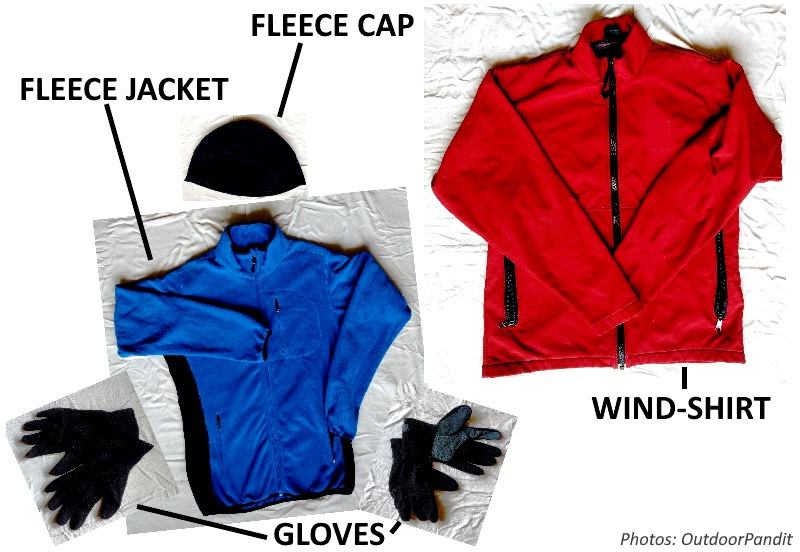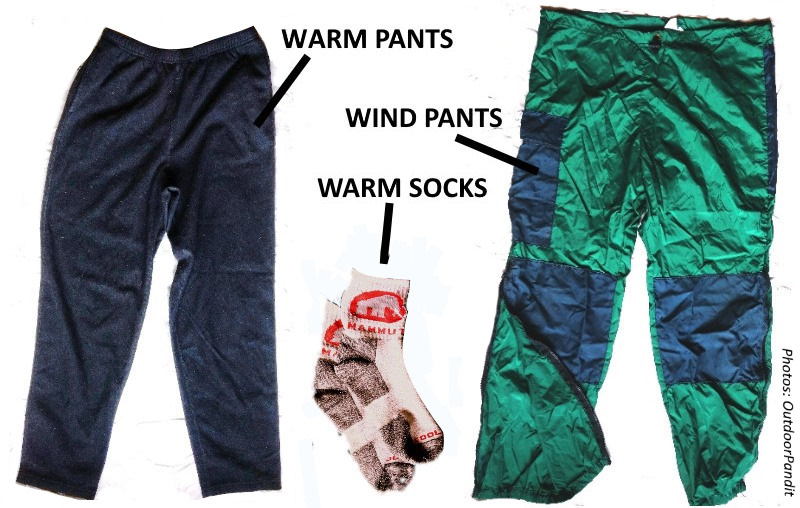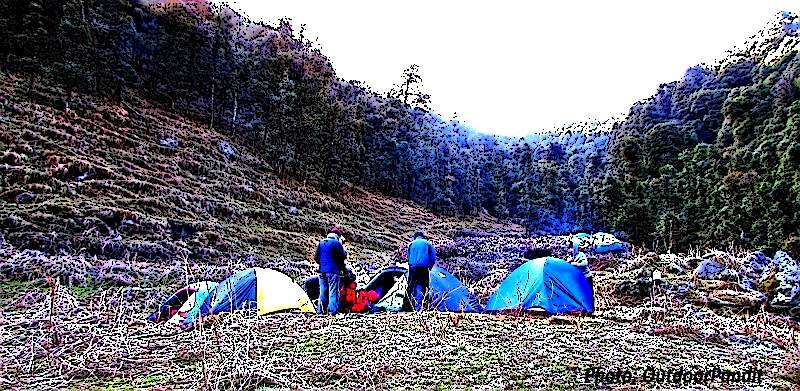* Clothes make the Hiker! *
There is neither a single set of clothes nor a given system of layering that can be recommended to one and all. So how does one go about choosing one’s layers of clothes which depend on multiple factors like expected weather conditions, pack-weight, duration of hike and, yes, one’s budget? How do experienced hikers evolve their own way of dressing up for the outdoors? With the wide variety of clothing available today, the options are very many, and it can get confusing. For instance, ‘should I buy a full sleeve fleece jacket and a fleece vest along with a wind-shirt, or is better to go in for a lightweight fleece jacket and a lightweight puffy jacket?’ It is important to note that such decisions need to be taken on an understanding of how layering works for efficient self-care in mountain weather.
In this post you will get a better understanding of what has worked for many accomplished outdoors people and why, and you will be able to quickly evolve your own layering system. This content mainly considers hiking in cold and wet weather country.

Types of layers
| Layer type | Purpose | Where to wear | When to wear |
| Base layer |
Wick moisture away from skin. Facilitate evaporation of sweat. Retain ability to keep hiker warm when wet. Dry as fast as possible. |
Next to skin | While hiking |
| Mid-layers | Insulation from cold. | Over base layer – choose size accordingly | When there is a need for additional warmth (e.g., during breaks in walking, evenings at camps) |
| Outer layers |
Provide protection from wind, rain and snow. Trap body heat, by preventing heat loss due to radiation and convection. (click here to read more about how a human body loses and gains heat) |
Over all layers of clothing – choose size accordingly |
When a breeze is uncomfortable for a hiker (e.g., during breaks in walking). In windy conditions. In wet conditions. |
| Thermal inners (a.k.a. long johns) | To provide additional warmth, over and above that provided by the combination of base-mid-outer layers. | The innermost layer – next to skin |
In cold conditions, for additional warmth (e.g., evenings at camp)
|

Multiple layers versus a single thick layer
Multiple layers of clothes work much better than having one or two thick layers, even if one of them is made from ‘multi-purpose’ fabric or set of layers which, say, insulates, is water resistant/repellant/proof, or is breathable. Also, multiple layers enable you to be flexible, allowing you to layer-up or de-layer depending on your feeling of comfort at any point of time.
Notes on smaller items
Head gear
At times I have seen hikers, both male and female, display strange reluctance to put on hats! If we look at one example, the point of why an appropriate hat benefits a hiker will be clear. In a camp in cold conditions, on any evening, any person would be wearing layers for warmth. Now, with most of the body covered, an exposed head is the part from where heat loss continues. And, since the scalp has a dense network of blood vessels and receives a rich supply of blood, the amount of heat lost to a colder environment can be to an extent where wearing a warm hat can make a discernable difference to a hiker’s feeling of warmth. Try it! Same context is valid for hikers walking in the sun.
Gloves and mittens
Gloves have separate fingers which makes it easy for you to work at your tasks. Mittens have one section covering four fingers and a separate one for the thumb. Gloves and mittens are made of many kinds of materials but, to keep it simple, a hiker’s choice can be narrowed down to wool, fleece, polyester, nylon, or a combination of these materials.
The main purpose of gloves and mittens is to provide protection from cold, moisture and wind: warmth and insulation. A simple guideline for choosing a set of gloves is to follow the table given above. Hikers generally tend to use gloves during evenings at camps, though in chilly conditions during the day it makes sense to put on at least the base layer pair of gloves while hiking.
Socks
You can read about socks on my post here

On Himalayan hikes I typically carry two pairs of fleece gloves – they are lightweight and dry very fast. If I get one wet then I have the other pair for the evening, and the wet one dries fast either hanging on my backpack as I walk or inside my sleeping bag during the night. If I know I may encounter large patches of snow where I could be spending a lot of time escorting my group members across each patch then I carry a pair of waterproof mittens to put over my gloves so I am not worried about getting my hands freezing cold and wet when I use them for support in the snow.
Tip: If you foresee yourself removing your gloves/mittens multiple times in order to do something on a trail then it is best to have each of them tethered to its respective wrist so as to not lose it down a slope.
For examples of how hikers can use multiple layers of warm clothing to their advantage, read my post here
